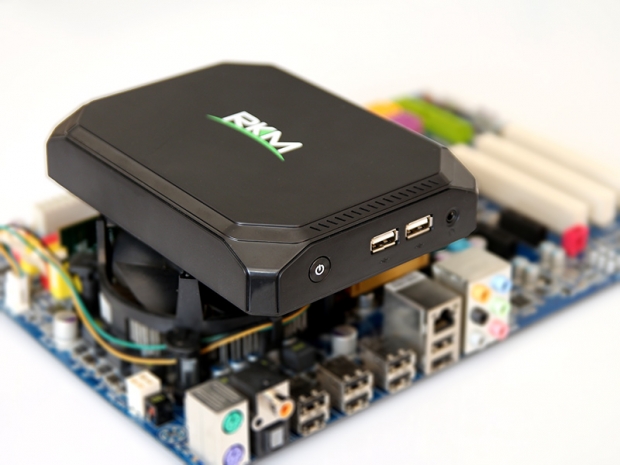Index
Review: No throttling here
Today we will be taking a look at another Bay Trail mini PC, based on a snappy tablet SoC in a compact chassis.
Intel's Bay Trail redefined the x86 landscape, by enabling vendors to design affordable mini PCs and tablets capable of running Windows. The new Rikomagic RKM M36 is yet another design based on the Intel Atom Z3736F processor, with 2GB of RAM and 32GB of on board storage.
Rikomagic might not be a familiar name in the PC space, but the company has been churning out loads of Android TV boxes, and now it’s going after the Windows space as well. However, the RKM M36 is a dual-boot system, so you get Windows 8.1 and Android 4.4 out of the box.
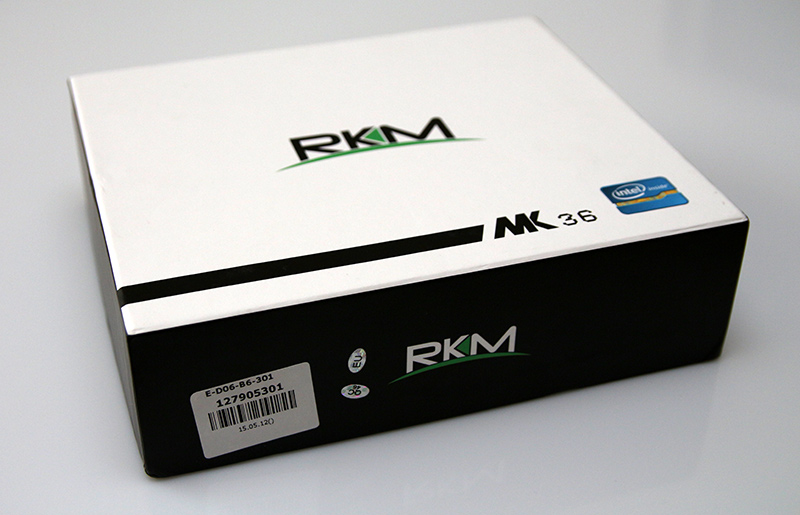
The M36 is somewhat bigger than many micro PCs coming out of China and Taiwan in recent months. Luckily, the extra space was put to good use – the device ships with a total of four USB 2.0 ports, a standard RJ45 network connector, and even a Kensington lock.
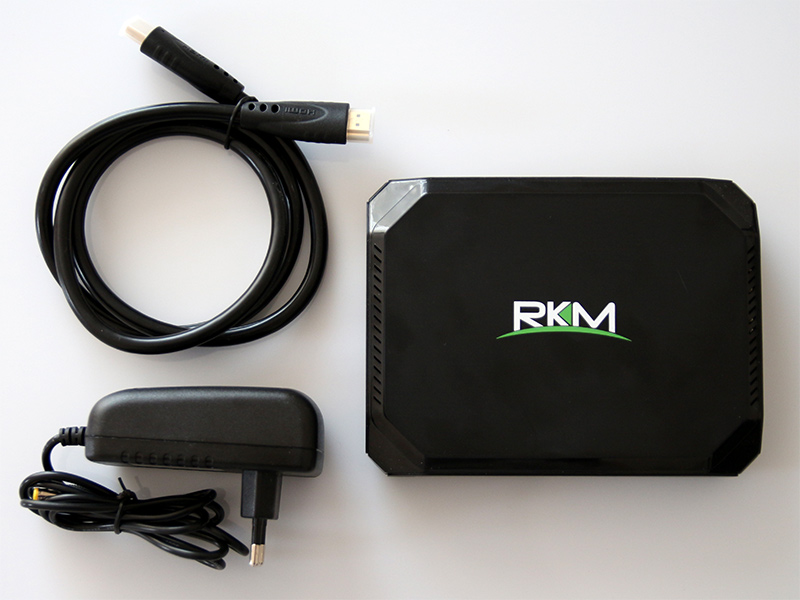
However, the best thing about having a bigger chassis is the fact that the M36 can operate at higher sustained clocks than most competitors. The Intel Atom Z3736F is an efficient part, but even so, if it is pushed too hard, it can heat up a tablet or stick PC to more than 40 degrees Celsius. Rikomagic decided to take a different approach, with a spacious chassis and a few cooling vents.
So what difference does this make in terms of performance? Let’s take a closer look.
Design and Build Quality
The RKM M36 features a plastic shroud over an alloy chassis. The finish is plastic, a combination of glossy and matte plastic with a faux brushed metal look. The design is simple – it’s a black rectangle measuring 158 x 120 x 33mm (6.21 x 4.72 x 1.30 inches).
If you were expecting a light, plastic chassis, think again – the RKM M36 isn’t very light, nor is it small. The device weighs 300g and it’s somewhat bigger than Intel’s smallest NUC units. Luckily, it’s quite a bit cheaper than an Intel NUC.
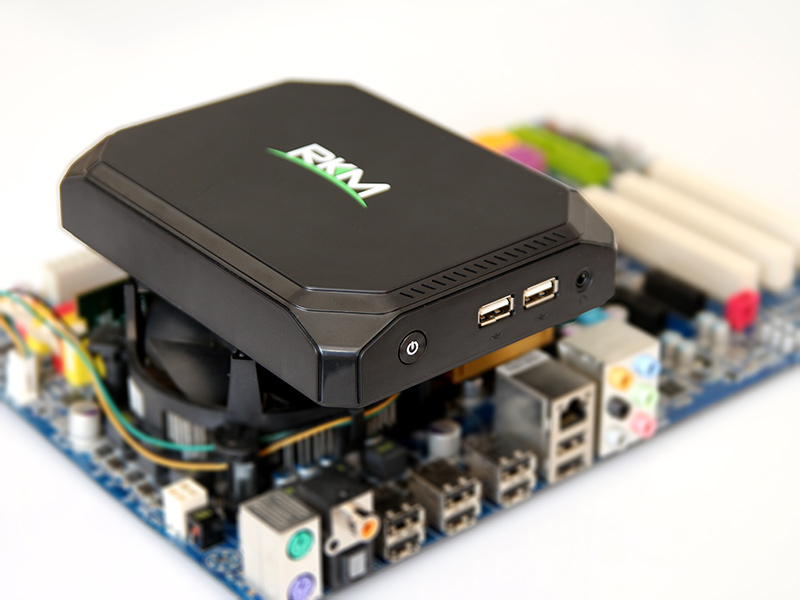
As far as the layout goes, all the connectors and buttons are located on the rear panel and the right side of the device. There is nothing on the front.
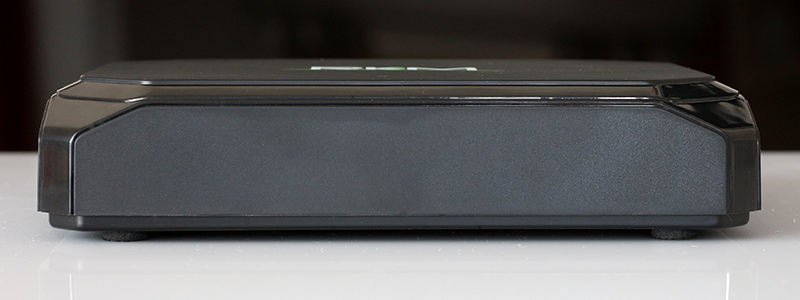
The right side houses the power button, two USB 2.0 ports and an audio jack.
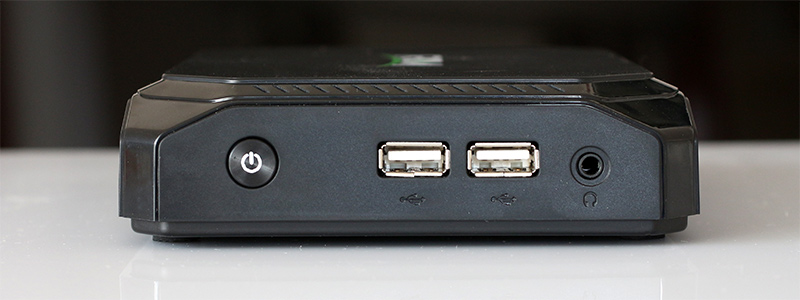
On the rear you will find two additional USB 2.0 ports, RJ45 Ethernet port, DC in, HDMI out, Kensington lock and a microSD card reader.
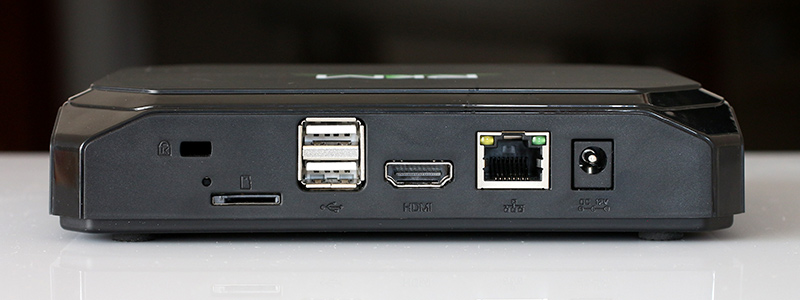
It’s a clever design choice, because you can easily access the power button or plug something into one of the USB 2.0 ports on the side, or use a wired headset for Skype without having to mess around the rear of the device.
So what about build quality? While it doesn’t feature an all-metal chassis like some competitors, there is really not much to complain about. The plastic feels good and the “weighty” feeling helps as well. To be frank, it looks and feels like some much pricier mini PCs.
The design is rather conservative, but in case you want something flashier, Rikomagic says it will have a gold version as well.
Rikomagic RKM M36 Specs and Performance
There is not much to say about the Intel Atom Z3736F processor, we’ve already reviewed a number of Bay Trail devices, and Intel’s 22nm entry-level processor has been around for a while.
Coupled with 2GB of RAM and speedy solid state storage, the processor is fast enough for most everyday tasks, such as content consumption and light office work. However, Rikomagic’s decision to go for a somewhat bigger chassis makes a difference, especially in sustained performance.
We will get to that later, after we take a look at the specs.
Rikomagic RKM M36 Specifications:
- Processor: Intel Atom Z3736F, quad-core, 1.33GHz stock, 2.16GHz Turbo, 22nm
- Graphics: Intel HD Graphics, 311MHz base, 646MHz burst
- RAM: 2GB DDR3L
- Storage: 32GB eMMC, expandable via microSD card up to 32GB
- Wireless: dual-band 802.11b/g/n, Bluetooth 4.0
- Dimensions: 158 x 120 x 33mm (6.21 x 4.72 x 1.30in)
- Weight: 300g
- Ports: 4 x USB 2.0, HDMI, 3.5mm audio, 100Mbps RJ45 (actually a USB to LAN adapter), DC in (12V 2A)
Since we are already very familiar with the platform, we saw no point in running too many benchmarks, so we focused on what really matters – storage and sustained performance. We threw in a few benchmarks pitting the tablet Bay Trail against AMD’s Athlon 5350 desktop APU, just to get a better feel of how they stack up.
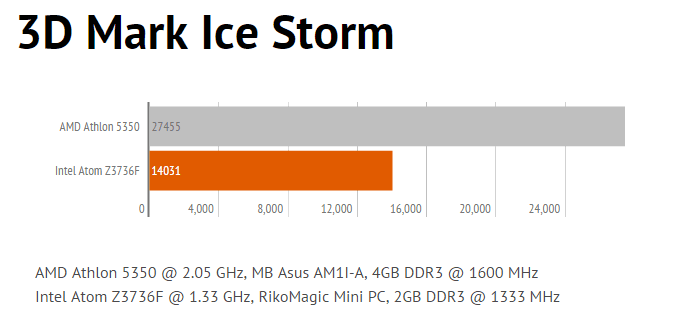
In 3D Mark Ice Storm, the RKM scores 14031, which is what we’ve come to expect from Bay Trail machines.

The bigger AMD APU also outpaces it in PCMark 8, which is hardly surprising considering the TDP difference.
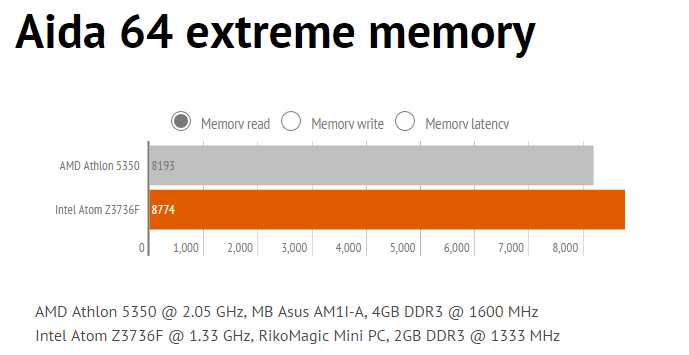
It’s not a one-sided match though, as Intel’s platform manages to score somewhat better in AIDA 64’s memory benchmarks.
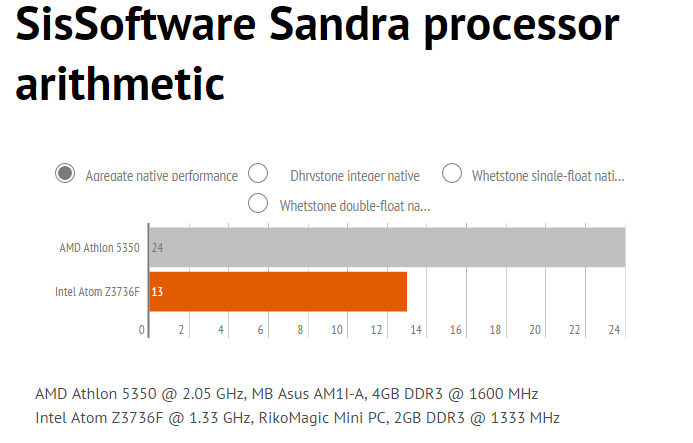
SiSoftware Sandra aggregate native performance also favours the AMD.
Bear in mind that this is really not a fair comparison – the AMD chip has a TDP of 25W, while the Atom has a TDP of about 5W and an SDP of 2.2W. It might not be fair, but that was sort of the point, as we wanted to compare the RKM M36 to an HTPC platform used by one of our teammates. At the end of the day, the tablet SoC comes very close to AMD's entry-level desktop offering in most tests. Of course, AMD has the upper hand in GPU-bound tests.
As we continued to run benchmarks, we got a feeling that the RKM M36 copes with load pretty well, quite a bit better than stick PCs and other micro PCs. The system can sustain Turbo clocks for a while, more than enough for everyday scenarios (unzipping, installing, browsing etc.).
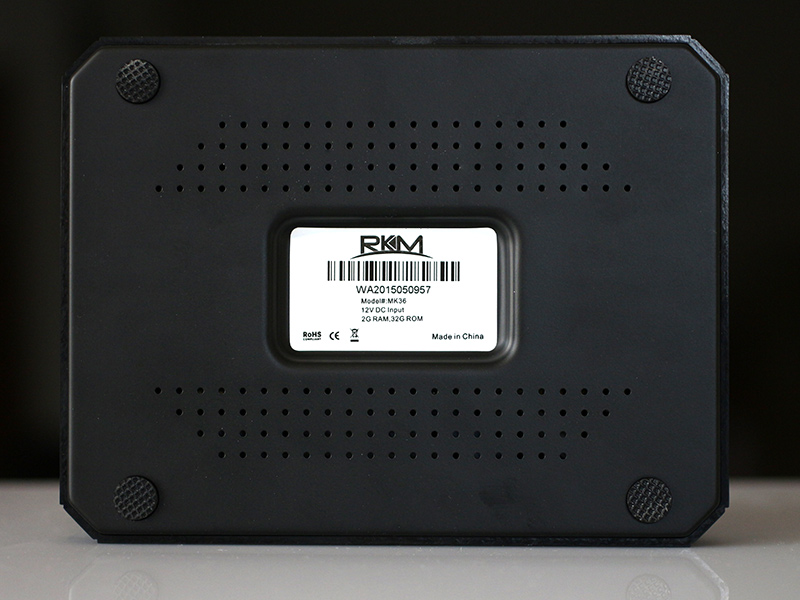
HWmonitor CPUID returned some weird numbers, including a faulty temperature reading and a max clock of 3284MHz (!?) at full load. However, PCMark was a bit more realistic (and reliable) – it showed the RKM hitting just over 2.2GHz after an hour of benchmarking. The CPU managed to sustain high clocks in a number of tests, namely casual gaming, write and photo editing tests.

The CPU quickly heats up to about 50 degrees Celsius under average load, but even if you push it very hard, it usually stays under the 70 degree mark at all times.
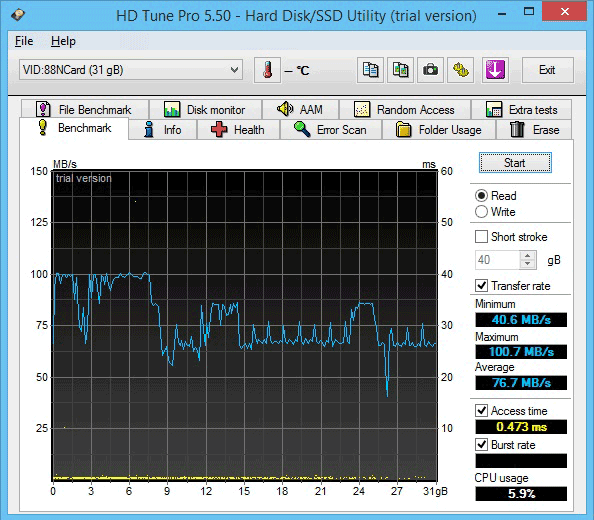
Storage tests reveal that the eMMC drive is a solid performer, scoring well over 100MB/s in a number of tests. Of course, sequential read and write are not nearly as fast, but we’ve come to expect that. The biggest problem with the storage has nothing to do with performance – it’s the fact that you get two operating systems on a 32GB drive, along with a number of partitions.
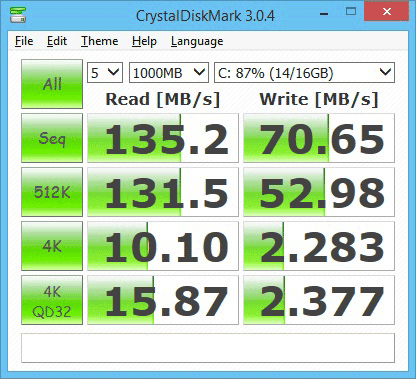
While having Android and Windows on a HTPC may sound appealing, especially if you are into casual gaming, 32GB is a bit too cramped. You also end up with loads of partitions, which is a hassle. Luckily, the microSD slot should be more than sufficient for the occasional download, although it won’t come near the eMMC in terms of sheer speed.
Setup and Everyday Use
Setting up the Rikomagic RKM M36 is as simple as it gets. Just plug in the power supply, input devices and connect it to your TV or monitor via HDMI. It’s ready to go in a matter of minutes.
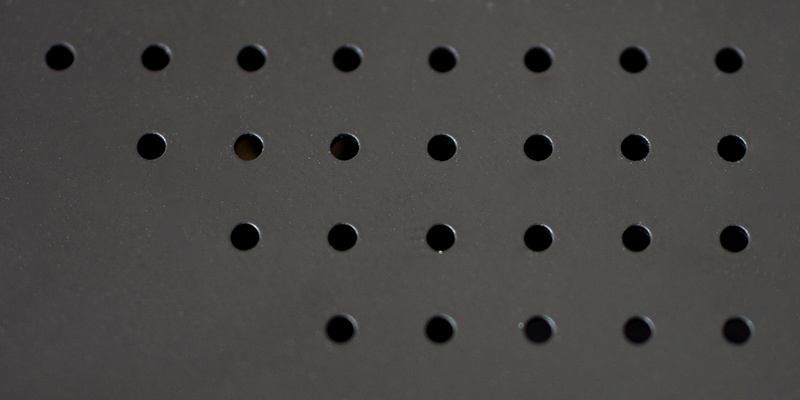
It’s not quite as portable as some micro PCs, let along stick PCs, but it has a couple of advantages. We already talked about the spacious chassis that can easily cope with the heat generated by the Bay Trail SoC, but that’s not all. The power button, two USBs and audio are located on the right side for ease of access, and this was a good call on Rikomagic’s part. You don’t have to mess around to connect a USB stick or any type of peripheral. It might not be as portable as a stick PC, but it is a bit more practical as an everyday office machine or an HTPC.
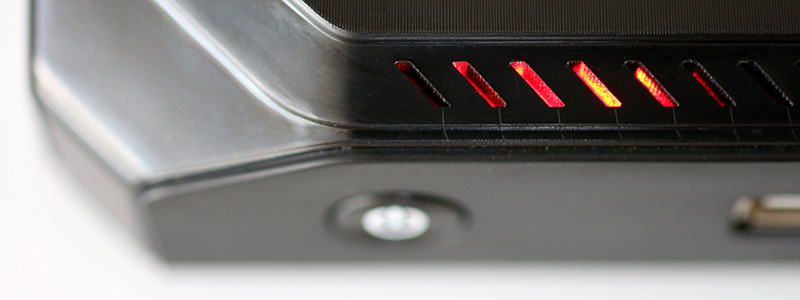
The only problem with the layout is that you still can’t see an activity LED on the front, but it’s there – buried in the vents above the power button.
Another problem that plagues virtually all Bay Trail micro PCs, including Intel’s own Compute Stick, is the fact that overscan controls aren’t available. With many older monitors and some TVs, they would have been very helpful. Still, this shouldn’t be much of a problem for most users, although it is worth having in mind, especially if you want to use the system on a few different screens.
There is also one other thing worth mentioning. Bay Trail micro PCs aren’t capable of powering most external hard drives, since they simply lack the juice to do it. You should have no problem with other forms of external storage, including micro SD cards, USB sticks, or powered external hard drives.
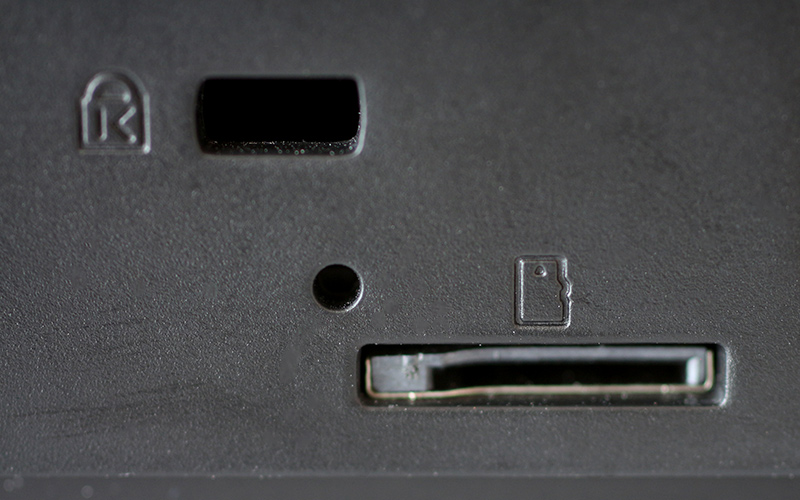
Conclusion
The Rikomagic RKM M36 is a strange beast. It wants to be a cheap and fun micro PC, but not at the expense of overall performance. Thanks to the oversized chassis that allows for a bit of airflow, the CPU can sustain high clocks under load, which is not the case with extremely small stick PCs.
The trade-off is obvious – the M36 isn’t a very compact device, it’s about the size of an Intel NUC. More room also means more connectors, so you get a couple of extra USB ports and an Ethernet socket. This might be good news for small offices, although many home users have ditched wired networks years ago.
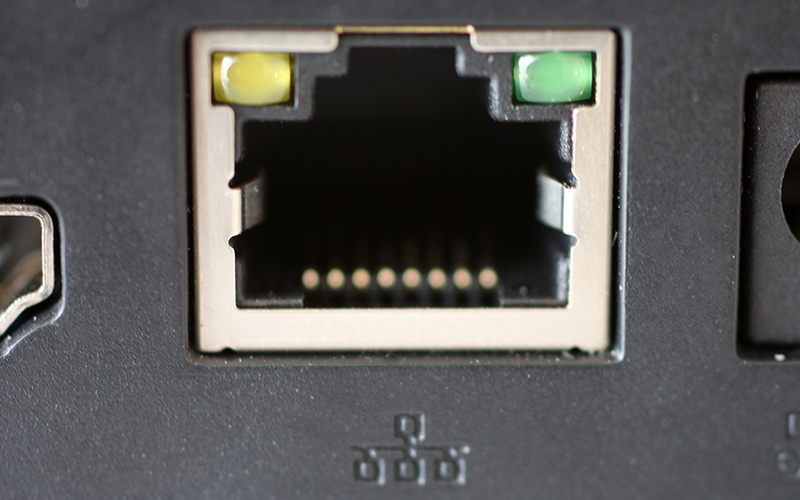
Dual boot is a mixed bag. While the ability to run Windows for serious stuff and Android 4.4 for a bit of fun sounds good, you also lose a lot of storage. With 32GB on board, this is a big deal - 64GB of internal storage would be a selling point for many users. Then again, if you don’t plan on installing a lot of applications, and if you don’t download a lot of stuff, it’s not too bad. You can still do some light office work in Windows, then run Kodi or Popcorn, then reboot into Android for some WoT Blitz (The M36 also has an appropriate name for the latter, although it lacks a 90mm gun).
The asking price is $154 with free shipping, which means the RKM M36 is a bit pricier than most Bay Trail mini PCs. However, it ships with a somewhat faster processor than these entry-level models, and it does not throttle nearly as much, so for a $20-30 premium you get a bit more sustained performance.

